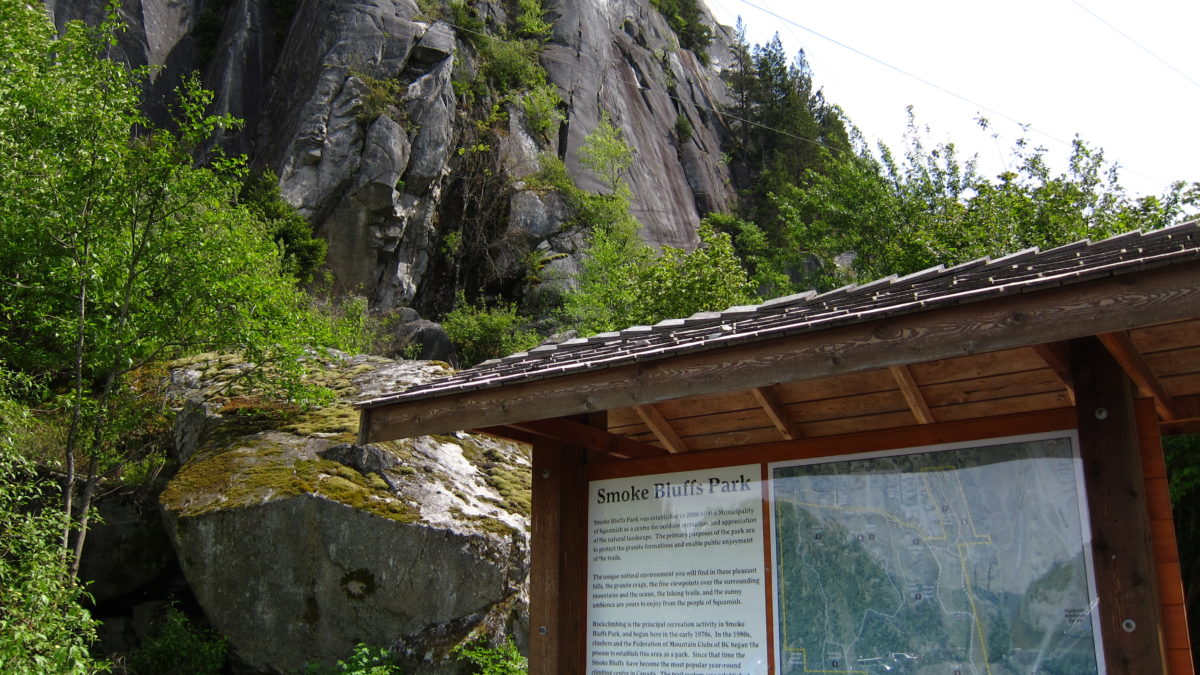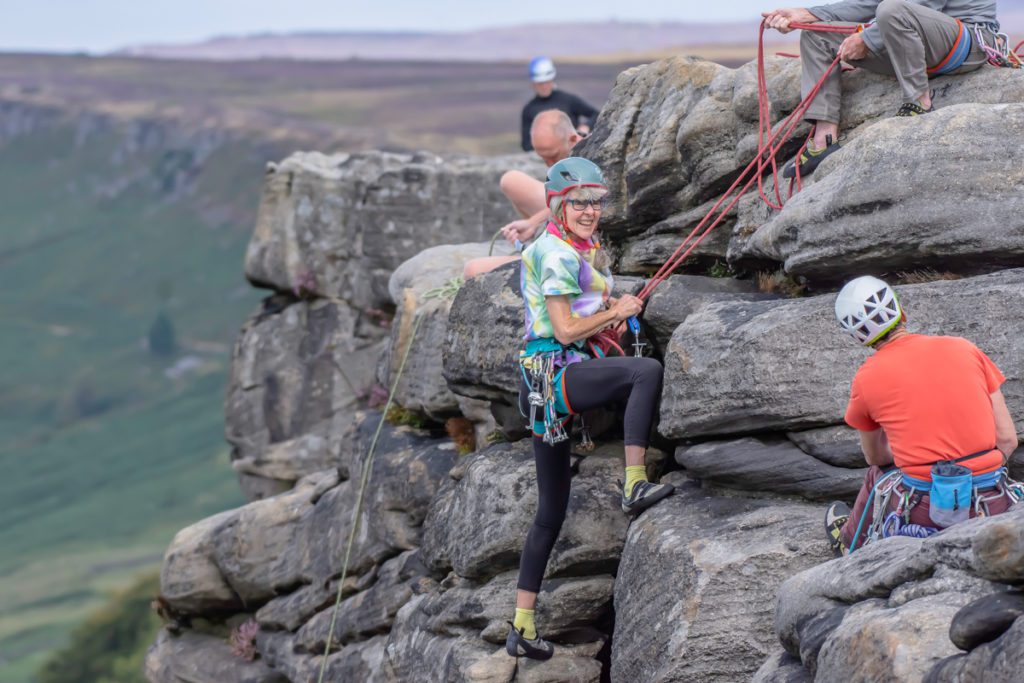Eight Tips to Help Maintain Access to Rock Climbing Areas
Keeping access to Canadian crags requires all climbers to follow a few simple unwritten rules

You’ve had fun at the gym, learned a lot of great movements, mastered belaying indoors and heard tell of the outdoors where the sport began. You’re confident you know the safety techniques of outdoor leading and belaying, or bouldering and spotting. Furthermore, you have a bouldering pad or quickdraws and a helmet and are ready to take your climbing outside.
But wait! You may know how to keep yourself and your partner safe in the gym, but do you realize that there are a lot of things to learn before you climb outside? First, be certain that you know the essential safety techniques of outdoor climbing. Then learn the ethics and etiquette climbers embrace to protect the cliffs and boulders, the environment and their relationships with other climbers. Luckily, we’re here to help you become a protector of access and the environment and a great example of how to have fun climbing and how to be a model climbing citizen.
Leave no trace: This is the single most important rule. Do not leave litter of any kind. Pack out small items like finger tape, labels and tags from your new climbing gear, cigarette butts. Oh, and it’s good style to pick any stuff up you see around left by less considerate visitors. Never build a fire at the rocks. Dry brush can catch fire and the fire pit is unseemly and invites more people to light fires. Remember, the outdoor environment is fragile, and we are its stewards. Landowners will hold us responsible for our actions. Hammocks strung between trees can damage the bark, and smoke is a form of pollution for everyone who is not smoking. Especially on boulders, don’t leave tickmarks and brush your chalk off after your send.
Pets on a leash: People have only started bringing large numbers of pets to the cliff recently. Did you know that there’s a by-law that states all dogs at the Smoke Bluffs in Squamish have to be on a leash? Dogs can add to the noise, erosion, environmental impact and waste that needs to be managed at the cliff, and they are often not safe on technical approaches, wandering the talus, or tied up and frustrated at the base. If you take your dog to the cliff, make sure it is on a leash and bring bags for its waste, don’t assume everyone has come to the crag to meet it, and keep it away from other peoples’ equipment. There are dog-pee marks on the bases of many cliffs now. It should go without saying that letting your dog pee on the rock is not a show of respect for the cliffs.
Know how to dispose of human waster: Even before the new influx of new climbers, areas have been closed because of inconsiderate, and disgusting practices of relieving oneself at the crag. Use the facilities before you come to the crag, and if you have to go, know the leave-no-trace etiquette that applies to your area Note, however, that at many areas, you must use the facilities provided, or have the equipment or take out your waste.
Keep small groups: Gyms are built to accommodate large groups and everyone expects the noise, lining up for routes and stepping over each other’s equipment. In the outdoors, large climbing groups can be unwieldy, noisy and hog large sections of the walls. It is best to climb in groups of a maximum of three, and ideally two. People waiting to climb create a bigger physical footprint, more noise and potential litter. At crowded crags, climbing with just one other climber will give you the advantage of being able to nimbly move around the cliff to climb the least crowded routes.
Keep the noise down: Did you know a popular beginner crag was closed because of climber-generated noise? In the gym you have to raise your voice to be heard, climbers often shout and cheer each other on and fallen or frustrated climbers unleash streams of expletives. At the cliff, this makes a very poor impression of the sport on landowners and non-climbers. In the gym, music is piped in through speakers. Any kind of audible music at the rocks affects the experience of other climbers and visitors and impedes belayer-climber communication. Drones are another source of noise and an imposition on the experience of other climbers.
Know your area: The climbing traditions at your local area may go back a half a century or more and many of the routes predate the whole gym climbing phenomenon. The climbs are permanent and never re-set. They are seen as respected historical expressions of climbing of which today’s climbers are stewards. Understanding something of the history of your area will increase your respect and deepen your experience, as well as help you learn why rock climbing’s traditions and etiquette exist. Buy the proper guidebooks. They contain a wealth of information and are produced by people who are passionate about their areas. Follow the news about your areas on the local climbing sites. You can stay ahead of closures, new route information and crucially, the projects and concerns of people deeply engaged in maintaining access. Bonus points for getting to know the flora and fauna of your local area. Climbers should work to preserve these essential parts of the ecosystem.
Respect others: Routes in climbing gyms are made by paid staff for your climbing pleasure. Outdoor route developers practice, with no remuneration, the subtle art of using the natural rock, along with bolts that they provide at their own expense to create climbs for the community. The bolts on these routes are not regularly spaced and your safety is up to you. We all owe a debt of gratitude to the pioneers who made climbing available to the whole climbing community.
Everyone at the cliff has as much of a right to be there as you. Talk to others courteously. You never know how much you will have in common with them, or what new insights they will have to the climbing area. Keep your equipment in one place, don’t spread out. Don’t move other peoples’ gear without asking them. Don’t hog a route for toproping. Never remove quickdraws from a route. In all likelihood, they are there for someone else to work a project.
Be a model climbing citizen: Volunteer on access committees. Their addresses are easily found online. Help other climbers who seem to need direction. Politely remind those who don’t understand local traditions, rules or etiquette. We’re all in this climbing thing together, beginners and experienced climbers alike, and, importantly, always climb safely.




